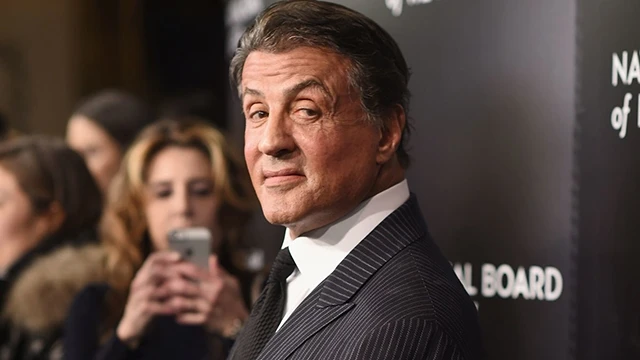Sylvester Stallone Drops Out of $1 Billion Project With ‘Creepy’ Robert De Niro

In a dramatic twist that has sent ripples through Hollywood, Sylvester Stallone has pulled out of a monumental $1 billion project, citing Robert De Niro’s overwhelming ‘wokeness’ as the primary reason. Stallone, famed for his roles in the “Rocky” and “Rambo” franchises, made the shocking announcement, stirring a whirlwind of discussions about the intricate balance between personal beliefs and professional collaborations in the entertainment industry. This article explores the details surrounding the project, Stallone’s bold decision, and the broader implications of ideological differences in Hollywood.
The high-stakes project, initially cloaked in secrecy, promised to be a landmark venture, boasting a staggering $1 billion budget. Fans and industry insiders were thrilled at the prospect of a collaboration between two of Hollywood’s most iconic figures, Sylvester Stallone and Robert De Niro. However, Stallone’s abrupt exit has cast a pall over the project’s future, leaving both the studio and the audience in a state of uncertainty regarding its fate.
Sources close to the production suggest that Stallone’s decision to withdraw was rooted in a profound ideological clash with De Niro, particularly over the latter’s staunch advocacy for what some describe as the growing ‘woke’ movement in Hollywood. De Niro, known for his outspoken support of various social and political causes, has often used his platform to champion these issues. Conversely, Stallone, whose legacy is built on portraying rugged, action-oriented characters, reportedly found the project’s thematic direction to be excessively aligned with what he perceives as a politically correct narrative, diverging from his artistic sensibilities.
Sylvester Stallone’s enduring legacy in Hollywood is marked by his iconic portrayals of characters like Rocky Balboa and John Rambo, figures that resonate deeply with audiences worldwide for their grit, determination, and raw physicality. His decision to step away from a billion-dollar project raises significant questions about the extent to which personal beliefs should influence professional collaborations. This is especially pertinent given Stallone’s historical association with roles that emphasize action and resilience over nuanced social commentary.
Robert De Niro, celebrated for his versatile performances and vocal advocacy for social justice, has increasingly become synonymous with the term ‘woke’ in Hollywood. His political activism has garnered him both praise and criticism, reflecting the polarized nature of contemporary societal debates. Stallone’s departure underscores the challenges of reconciling divergent ideological perspectives within the collaborative environment of film production.
In his official statement regarding his departure, Stallone remarked, “I have the utmost respect for Robert, but the project has taken a direction that I believe is too much ‘woke’ for my artistic sensibilities. I wish them the best, but it’s not the path I envisioned for this collaboration.” The use of the term ‘woke’ in Stallone’s statement is particularly telling, highlighting the ongoing discourse within the industry about the influence of social and political ideologies on creative endeavors.

The news of Stallone’s exit from the $1 billion project has elicited a wide range of reactions within the industry. Some argue that personal ideologies should not obstruct artistic collaborations, emphasizing the importance of maintaining a diversity of thought within creative endeavors. Others contend that artists must have the freedom to express their concerns when they feel a project diverges from their artistic vision.
The ideological clash between Stallone and De Niro is not an isolated incident in Hollywood. The industry, often viewed as a bastion of liberal values, continues to grapple with how to accommodate diverse perspectives while producing compelling and inclusive content. Stallone’s departure adds another layer to the ongoing conversation about creative freedom and the potential stifling effect of political correctness on artistic expression.
Stallone’s exit from this high-profile project prompts a broader reflection on the implications for Hollywood and the entertainment industry at large. As society becomes increasingly polarized, the industry faces the challenge of balancing creative expression with commercial viability. This incident underscores the necessity for open dialogue and a nuanced understanding of the complexities surrounding differing ideologies within the creative space.
Furthermore, the situation highlights the potential friction between longstanding Hollywood icons and the evolving cultural landscape. For Stallone, whose career has been defined by roles that emphasize personal strength and resilience, the shift towards themes perceived as ‘woke’ may represent a fundamental departure from his artistic ethos. De Niro, on the other hand, embodies the modern actor-activist, using his platform to advocate for social change and challenge traditional norms.
The incident also raises questions about the future of collaborative projects in Hollywood. Will ideological differences increasingly become a stumbling block for high-profile collaborations? How will studios navigate the delicate balance between accommodating diverse viewpoints and maintaining a coherent creative vision? These are questions that the industry will need to address as it moves forward in an increasingly complex socio-political landscape.
Sylvester Stallone’s decision to drop out of a $1 billion project with Robert De Niro over ideological differences serves as a poignant reminder of the delicate balance between personal convictions and professional collaborations in Hollywood. The clash of ideologies between these two cinematic titans adds to the ongoing conversation about artistic freedom, political correctness, and the challenges of navigating diverse perspectives within the entertainment industry. As the incident reverberates through Hollywood, it prompts contemplation on the future of collaborative projects and the evolving dynamics of ideological differences within the creative realm.

